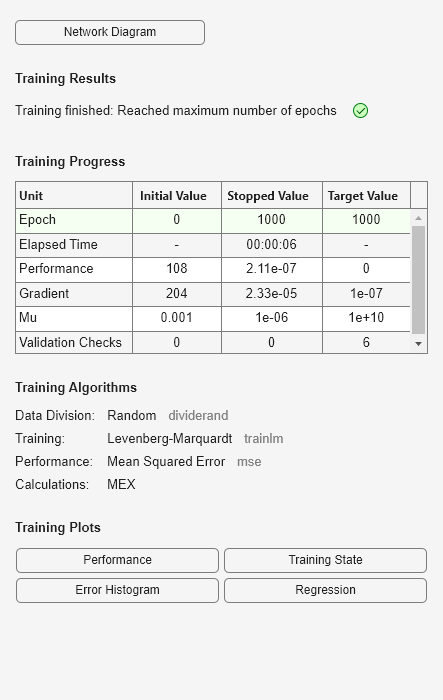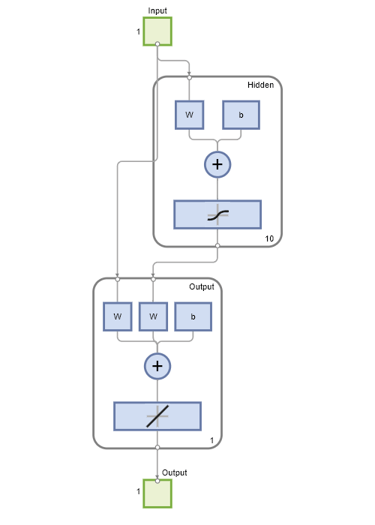cascadeforwardnet
Generate cascade-forward neural network
Description
net = cascadeforwardnet(hiddenSizes,trainFcn)hiddenSizes and training function, specified by
trainFcn.
Cascade-forward networks are similar to feed-forward networks, but include a connection from the input and every previous layer to following layers.
As with feed-forward networks, a two-or more layer cascade-network can learn any finite input-output relationship arbitrarily well given enough hidden neurons.
Examples
Input Arguments
Output Arguments
Version History
Introduced in R2010b


